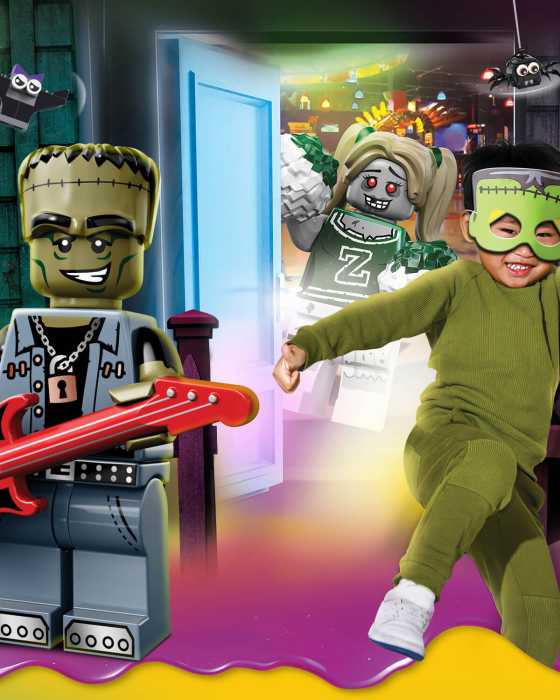The practice of martial arts reaches far beyond methods of self-defense and fitness; it’s an excellent activity for the growth of both the body and the mind, and it’s an activity that can help children gain greater perspective in life. The benefits of martial arts seem endless, and Suzanne Kocaj, a Yonkers-based English teacher and mother of two, has seen the positive effect it can have on children. Her 9-year-old son had an excess of energy as a young boy, which was having a negative effect on his school performance. Kocaj and her husband decided to try channeling his energy into a purposeful and structured activity.
“We wanted both our boys to learn something useful, something that would last a lifetime,” says Kocaj. “To some, martial arts might equal fighting and an inability to control oneself, but you’ll find that it is quite the opposite.” Kocaj came to realize that martial arts can teach self-control, discipline, respect for oneself and all living things. “It is a practice of meditation, implementing healthy eating and sleeping habits, being one with nature, mentally and physically pushing oneself and realizing that growth and potential are endless,” she says.
Other teachers agree. “Most children would benefit from a program that teaches them a skill or utilizes their energy in a positive way,” says AfsiParandian, a kindergarten teacher in Yonkers. “The discipline and focus needed for martial arts can help them transfer that focus in school.”
MORE ACTIVE AND PHYSICALLY FIT
“In this day and age, there is so much time spent sitting and using electronic devices,” says Cynthia LaBella, M.D., chair of the American Academy of Pediatrics Council on Sports Medicine and Fitness. “Martial arts are a good way to get kids more physically active and fit, and help them develop healthy exercise habits that will last a lifetime.”
Master Susan Chung, co-owner of Bruce Chung’s Tae Kwon Do in Harrison, recognizes that a lot of children tend to have low muscle tone and little coordination. She says that practicing martial arts can help children develop agility, flexibility, balance, coordination and core strength. “The idea of standing on one leg and kicking with the other takes a lot of these skills, and we work on them constantly in each class,” she says.
GREATER SELF-CONFIDENCE AND RESPECT
Master Chris Berlow, owner of United Martial Arts Center (UMAC) in Briarcliff Manor, believes the core benefit of martial arts focuses on the mind, and he prides himself on helping students believe they can accomplish anything. Their confidence is often built through their motivation to excel within the belt system. Each child starts with a white belt and then progresses to different colors throughout their training, ultimately ending with a black belt. In order to reach a new belt level, they have to stand in front of their instructors, peers and parents,and show everyone what they’ve learned. “The process of going through the tests to get a new belt is huge,” he says. “Confidence is developed through this accomplishment.”
A martial arts class begins and ends with a bow to the instructor, and through this practice, children learn a lot about respect – how to respect each other, themselves, their instructors and even parents and teachers. “Martial arts have been an integral part of my development as a human being,” says 21-year-old Madeline Spencer, a black belt and devotee to martial arts since the age of 4. “From a very young ageI was taught discipline and respect. I developed a sense of self-worth and self-esteem that many of my peers did not have.”
INCREASED SELF-DISCIPLINE
At UMAC, Master Berlow instills a black belt attitude with every student. “It starts in the mind first. I tell all my students to act as though they’re a black belt, even if they aren’t one yet,” he says. “Once they believe it in their mind, they’re able to achieve it, and this becomes a driving force in their life.”
The mindset of “never give up” transfers nicely from the dojo or dojang (martial arts studio) to the classroom and often helps kids succeed in school. “A student who has learned self-discipline is better able to focus on the overall goals set out within a school setting,” says Kocaj. “This child is also better equipped to deal with various social situations and show respect for self and peers. Martial arts teach the concepts of accountability and responsibility, both vital to classroom performance.”
INCREASED ABILITY TO FOCUS
Most kids start practicing martial arts at a young age and aren’t sure what to expect, but they quickly catch on and understand that there’s a structure to each class – usually beginning with a warm-up and then practicing basic fundamentals, skillsand techniques – and it’s a structure that can be highly beneficial for children with Attention Deficit Hyperactivity Disorder (ADHD).
According to Judith Adamo, Ph.D., “in individuals with attention disorders, regulating their reactions and/or impulses can be difficult. Some parents have found it extremely helpful to enroll their children in disciplined activities such as the martial arts. These activities incorporate both mental and physical discipline. It is through this type of experience that, over time, the children may learn to internalize the control that is necessary to carry out life’s activities.”
Master Chung sees kids with ADHD excel all the time. “It takes everything they have to stay focused, but they want it,” she says. “They work hard and really dig down inside themselves and try hard to focus. It isn’t easy for them, some kids get distracted, but they learn to focus inward and it works.” In martial arts, you have to memorize a lot of steps and forms, and you can’t do that if you aren’t focused. She’s seen kids go from running around the room or laying on the floor to progressing to earn their black belt.
WHAT’S A GOOD AGE TO START?
Starting ages vary, depending on the school, but many kids often begin practicing martial arts as early as ages 4 and 5. “Children’s gross motor skills are still developing, but most children would be ready at this age,” says Parandian.
According to LaBella, “the early stages of training are very basic and fundamental. The focus is on self-discipline and building self-esteem, as well as developing basic coordination. The instructors generally make it fun at this age – using games to keep the kids interested.”
FAMILIES PRACTICING TOGETHER
Some parents are so inspired by their children’s progress and growth through martial arts, that they themselves begin to practice. As Master Berlow says, “the family who kicks together, sticks together,” and many parents agree.
Cathy LoDuca began practicing Tae Kwon Do with her 9-year-old son three years ago after witnessing his mental and physical success at UMAC. They often take class together or find themselves working together on skills at home. “For me, I’m grateful for this opportunity to connect with my son in a different way, and for him to observe my challenges,” she says. “I enjoy the fact that my son is higher in rank than I am, because he often helps me with what I’m learning and he feels a great sense of accomplishment from showing mom something.”
Christina Cook is the editorial assistant of Westchester Family.
MARTIAL ARTS CLASSES
Your child can study a wide variety of martial arts classes. Here is a brief description of each style.
TAE KWON DO a Korean martial art known for its emphasis on sophisticated kicking techniques. It’s one of the more popular forms of martial arts in the U.S. and is also a full medal Olympic sport.
KARATE a Japanese martial art that stresses striking techniques such as punching and kicking.
KUNG FU a Chinese martial art, similar to karate, which uses strength, low stances and powerful blocks.
JUDO a Japanese form of martial arts that’s taught as a competitive sport, in which one learns to throw opponents to the ground, similar to wrestling.
JUJITSU a Japanese form of self-defense in which one learns to use their opponent’s weight and strength as a weapon against them.
AIKIDO a Japanese martial art, similar to Jujitsu, which uses the opponent’s movements and force against them.












